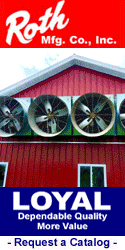 |
 |

|
|
|
Illinois Ag News Headlines |
 |
Characteristics of Higher Profit Farms
By: Brandy Krapf, Dwight Raab, Bradley Zwilling, FBFM and U of Illinois - 05/21/2018
This article uses 2017 data from Illinois Farm Business Farm Management to highlight selected differences between the highest profit grain farms (high one-third) and lower profitability grain farms (low one-third). Farms are grouped by region in the state - north, central and south. The central area is further divided into a group with higher productivity soils and one with lower productivity soils. All farms were at least 500 acres in size.
Higher profit farms in general had higher crop yields. This was especially pronounced in southern Illinois with a 28 bushel advantage in corn yield of the high one third over the low one-third. The remaining three groups show an eight to nine bushel advantage in corn yields resulting in an estimated $30-$35 dollar per acre revenue advantage from the corn enterprise. The high one-third shows a bean yield advantage in all four groups as well. Lower productivity soils have a three bushel advantage while the remaining three groups show a five to six bushel advantage. These yield advantages of the high profitability farms result in greater reported gross farm returns for all four groups for the high one-third group. The central Illinois grain farm high one-third groups show just under a $100 better gross farm return while the north and south groups show just over a $100 per acre advantage.
The northern and southern groups in the high one-third report more acres devoted to corn production than the low one-third. As you might expect, those same farms report fewer acres devoted to soybean production. The central low one-third groups report more soybean acres in production than the high one-third.
Farm size appears to be a contributing factor in higher profitability. The four sorts all report over a 400 tillable acre larger farm size on average for the high one-third profit farms.
The high profit one-third for all four sorts has a lesser percentage of acres owned as compared to the lower profit farms. A farms investment in land as opposed to a farms investment in machinery and a growing crop tends to tends to suppress overall profitability.
The combination of seed, fertility and pesticides expenses as represented by crop costs are lower for the higher profit farms. The cost advantages to the high one-third for crop costs were $36, $33, $18 and $22 for the four groups. The same is true for power and equipment costs. The cost advantages to the high one-third for power and equipment costs were $30, $38, $36 and $43 for the four groups.
The combination of greater gross farm revenue and lesser costs make for management returns that are significantly higher for the higher profit farms. The management return advantage for the high one-third farms are $228, $227, $190 and 203 for the four groups. With gross farm returns in the $700 to $800 range, the management return advantage to the high one-third farms has considerable impact.
There are many factors contributing to the economic success of a farm operation. There is not one single thing that higher profit farm operators do that mark their success - there are many things that they do that influence their farm operations financial success.
The authors acknowledge the data used in this article are from the larger dataset maintained by the Illinois Farm Business Farm Management Association. Without the cooperation of the members and staff of Illinois FBFM, information as comprehensive and accurate as this would not be available for educational purposes. Illinois FBFM maintains a roster of approximately 5,700 members who are served by 69 professional field staff. Illinois FBFM is an not-for-profit entity with membership available to all farm operators in Illinois. Illinois FBFM field staff provide counsel and guidance in the areas of recordkeeping, farm financial management, business entity planning and income tax management. For more information, please contact the Illinois FBFM office located in Mumford Hall within the Department of Agricultural and Consumer Economics at the University of Illinois. The phone number is 217.333.5511 and the website is www.fbfm.org.
|
 |


|
 |
|
Copyright © 2024 - Farms.com. All Rights Reserved. |
 |
|